-
 Bitcoin
Bitcoin $108,165.4587
0.78% -
 Ethereum
Ethereum $2,456.3517
1.15% -
 Tether USDt
Tether USDt $1.0003
0.00% -
 XRP
XRP $2.1934
0.05% -
 BNB
BNB $650.0935
0.52% -
 Solana
Solana $151.3905
2.69% -
 USDC
USDC $0.9998
0.00% -
 TRON
TRON $0.2751
-0.32% -
 Dogecoin
Dogecoin $0.1640
0.87% -
 Cardano
Cardano $0.5631
0.57% -
 Hyperliquid
Hyperliquid $38.7115
4.69% -
 Bitcoin Cash
Bitcoin Cash $493.1868
-0.39% -
 Sui
Sui $2.8217
3.61% -
 Chainlink
Chainlink $13.3994
2.08% -
 UNUS SED LEO
UNUS SED LEO $9.1632
0.94% -
 Avalanche
Avalanche $18.0318
1.97% -
 Stellar
Stellar $0.2388
0.35% -
 Toncoin
Toncoin $2.8763
1.41% -
 Shiba Inu
Shiba Inu $0.0...01160
1.59% -
 Litecoin
Litecoin $86.6393
1.29% -
 Hedera
Hedera $0.1485
0.16% -
 Monero
Monero $315.7948
1.56% -
 Polkadot
Polkadot $3.4240
1.88% -
 Bitget Token
Bitget Token $4.6314
-0.44% -
 Dai
Dai $0.9998
-0.01% -
 Ethena USDe
Ethena USDe $1.0002
-0.01% -
 Uniswap
Uniswap $7.2110
2.59% -
 Aave
Aave $270.6087
6.07% -
 Pi
Pi $0.5350
0.52% -
 Pepe
Pepe $0.0...09545
1.26%
How to send Bitcoin from Crypto.com to Binance
Transferring Bitcoin from Crypto.com to Binance involves careful steps: ensure correct addresses, consider fees, and monitor network conditions for a secure transaction.
Apr 02, 2025 at 07:42 pm
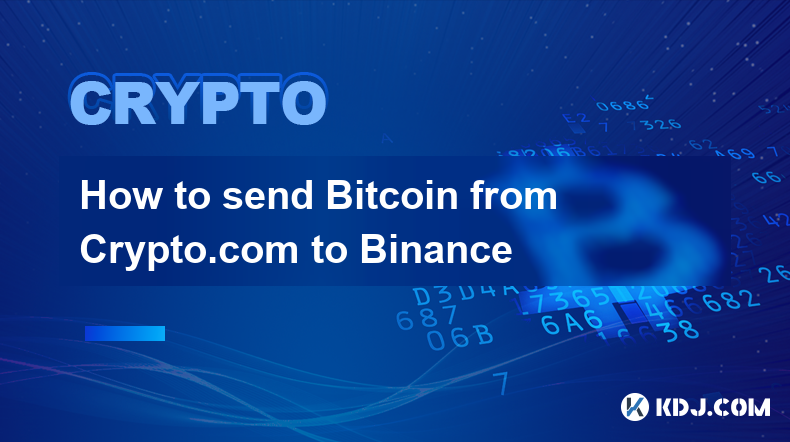
Sending Bitcoin from Crypto.com to Binance is a straightforward process, but it requires careful attention to detail to ensure the transaction is successful and secure. Before initiating the transfer, it's crucial to understand the steps involved and the potential fees associated with the transaction. This guide will walk you through the process step-by-step, ensuring you can move your Bitcoin safely and efficiently.
First, ensure that you have accounts on both Crypto.com and Binance, and that your Bitcoin is stored in your Crypto.com wallet. You'll need to have the necessary funds and be aware of any withdrawal limits that might apply. Additionally, consider the network fees and the current Bitcoin transaction times, as these can impact the speed and cost of your transfer.
Step 1: Prepare for the Transfer
Before you begin, make sure you have enough Bitcoin in your Crypto.com wallet to cover the transfer amount and any associated network fees. Here are some preparatory steps:
- Check your Bitcoin balance on Crypto.com.
- Ensure you have the correct withdrawal address for your Binance account.
- Be aware of the current Bitcoin network fees, as these can fluctuate.
- Consider the withdrawal limits on Crypto.com and deposit limits on Binance.
- Have a backup of your private keys and recovery phrases for both platforms, in case of any issues.
Step 2: Withdraw Bitcoin from Crypto.com
To initiate the withdrawal from Crypto.com, follow these steps:
- Log into your Crypto.com account.
- Navigate to the 'Accounts' section and select your Bitcoin wallet.
- Click on 'Withdraw' and select 'External Wallet'.
- Enter the Bitcoin address from your Binance account. Double-check this address to avoid any errors.
- Specify the amount of Bitcoin you wish to transfer. Remember to account for the network fee.
- Review the transaction details carefully. Once you confirm, the transaction will be processed.
Step 3: Confirm the Withdrawal on Crypto.com
After entering the withdrawal details, you'll need to confirm the transaction:
- Crypto.com may require additional verification steps, such as two-factor authentication (2FA).
- Once verified, the transaction will be sent to the Bitcoin network for processing.
- You'll receive a transaction ID (TXID) that you can use to track the status of your transfer.
Step 4: Receive Bitcoin on Binance
Once the Bitcoin transaction is confirmed on the blockchain, it will appear in your Binance account:
- Log into your Binance account and navigate to the 'Wallets' section.
- Select 'Spot Wallet' and then click on Bitcoin (BTC).
- You should see the incoming transaction reflected in your balance once it's confirmed on the network.
- The time it takes for the transaction to be confirmed can vary based on network congestion and the fee you paid.
Step 5: Verify the Transaction
To ensure the transaction was successful, you can:
- Use the TXID provided by Crypto.com to track the transaction on a blockchain explorer like Blockchain.com or BlockCypher.
- Check your Binance wallet to confirm the Bitcoin has been credited to your account.
- If there are any discrepancies or delays, contact the support teams of Crypto.com or Binance for assistance.
Understanding Fees and Limits
When transferring Bitcoin between Crypto.com and Binance, you need to be aware of the following:
- Network Fees: These are fees paid to miners to process your transaction on the Bitcoin network. The higher the fee, the faster your transaction will be processed.
- Withdrawal Fees: Crypto.com may charge a withdrawal fee for sending Bitcoin to an external wallet.
- Deposit Limits: Binance may have limits on how much Bitcoin you can deposit in a given period.
- Withdrawal Limits: Crypto.com may impose limits on how much Bitcoin you can withdraw within a certain timeframe.
Troubleshooting Common Issues
If you encounter any issues during the transfer process, consider the following:
- If the transaction is delayed, check the Bitcoin network congestion and the fee you paid. Higher fees can expedite processing.
- If the Bitcoin does not appear in your Binance account, ensure you used the correct deposit address and that the transaction has been confirmed on the blockchain.
- If you entered the wrong address, contact Crypto.com support immediately. Unfortunately, Bitcoin transactions cannot be reversed once sent.
- If you face any technical issues, ensure your internet connection is stable and try refreshing the page or logging out and back in.
Security Considerations
Security is paramount when dealing with cryptocurrency transfers. Here are some tips to keep your funds safe:
- Always double-check the withdrawal address before confirming the transaction.
- Use strong, unique passwords for both Crypto.com and Binance, and enable 2FA on both platforms.
- Never share your private keys or recovery phrases with anyone.
- Be wary of phishing attempts. Always access Crypto.com and Binance through their official websites or apps.
- Regularly update your software and use reputable antivirus programs to protect against malware.
Additional Tips for Efficient Transfers
To make your Bitcoin transfers as smooth as possible, consider these additional tips:
- Monitor Bitcoin network conditions. During times of high congestion, consider waiting for a less busy period or paying a higher fee for faster processing.
- Keep some Bitcoin in your Crypto.com wallet to cover network fees, ensuring you don't run into issues during withdrawal.
- Use a dedicated hardware wallet for storing large amounts of Bitcoin, and only transfer what you need to exchanges.
- Regularly review the fee structures and limits on both Crypto.com and Binance, as these can change over time.
Common Questions and Answers
Q: How long does it take to transfer Bitcoin from Crypto.com to Binance?
A: The time it takes can vary based on Bitcoin network congestion and the fee you paid. Typically, it can take anywhere from 10 minutes to several hours.
Q: What are the fees for transferring Bitcoin from Crypto.com to Binance?
A: You'll need to pay a network fee to the Bitcoin miners, which can vary. Crypto.com may also charge a withdrawal fee. Check their fee schedules for the most current rates.
Q: Can I cancel a Bitcoin transaction after it's been sent?
A: No, once a Bitcoin transaction is sent, it cannot be canceled or reversed. Always double-check the recipient's address before confirming the transaction.
Q: What should I do if my Bitcoin doesn't appear in my Binance account?
A: First, ensure the transaction has been confirmed on the blockchain using the TXID. If it has been confirmed and still doesn't appear, contact Binance support for assistance.
Q: Is it safe to transfer Bitcoin between Crypto.com and Binance?
A: Yes, as long as you follow security best practices, such as using strong passwords, enabling 2FA, and double-checking addresses, the transfer should be safe.
Disclaimer:info@kdj.com
The information provided is not trading advice. kdj.com does not assume any responsibility for any investments made based on the information provided in this article. Cryptocurrencies are highly volatile and it is highly recommended that you invest with caution after thorough research!
If you believe that the content used on this website infringes your copyright, please contact us immediately (info@kdj.com) and we will delete it promptly.
- ATOM, BNB, BlockDAG: Decoding the Latest Crypto Dynamics in the Concrete Jungle
- 2025-06-30 01:30:11
- Bitcoin's Role in a Weak Dollar World: Crypto Demand and Freedom
- 2025-06-30 00:50:12
- Binance, CZ, and XRP: Navigating the Crypto Currents
- 2025-06-30 00:55:12
- PayPal, PYUSD, and Stellar (XLM:
- 2025-06-30 00:30:12
- Nike, Coinbase, and Large Cap Gainers: What's the Buzz?
- 2025-06-30 00:30:12
- Crypto's Cutting Edge: Web3 AI, Ethereum's Foundation, and Dogecoin's Enduring Meme Magic
- 2025-06-30 01:30:11
Related knowledge
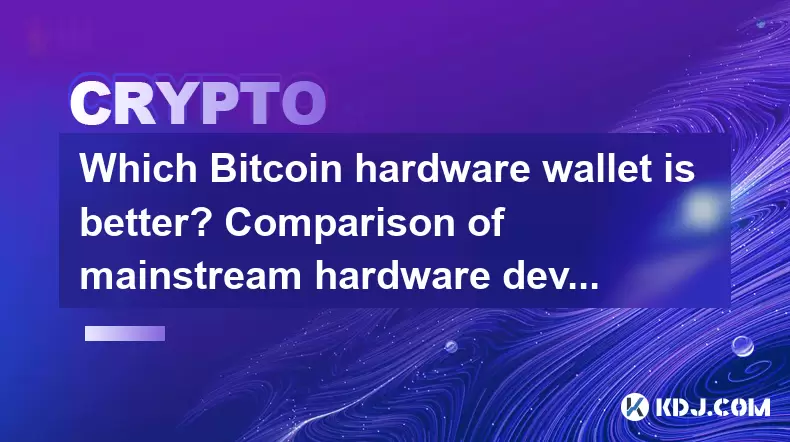
Which Bitcoin hardware wallet is better? Comparison of mainstream hardware devices
Jun 16,2025 at 02:08am
What Is a Bitcoin Hardware Wallet?A Bitcoin hardware wallet is a physical device designed to securely store the private keys associated with your cryptocurrency holdings. Unlike software wallets, which are more vulnerable to online threats, hardware wallets keep private keys offline, significantly reducing the risk of unauthorized access. These devices ...
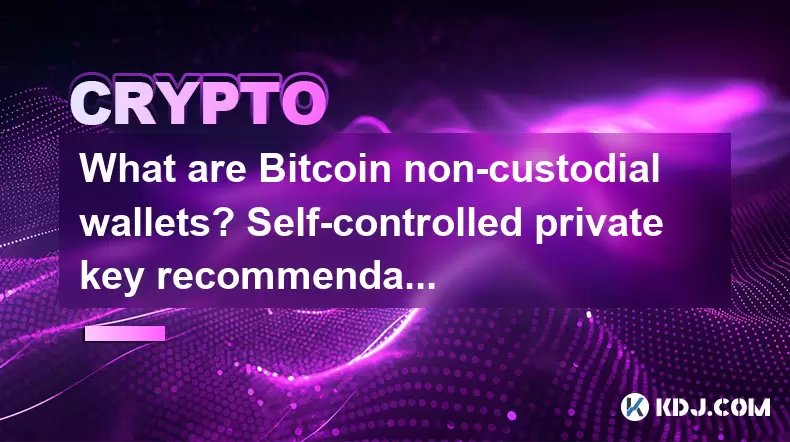
What are Bitcoin non-custodial wallets? Self-controlled private key recommendation
Jun 16,2025 at 11:29pm
Understanding Bitcoin Non-Custodial WalletsA Bitcoin non-custodial wallet is a type of digital wallet where users retain full control over their private keys. Unlike custodial wallets, which are managed by third-party services such as exchanges, non-custodial wallets ensure that only the user can access and manage their funds. This means no intermediary...
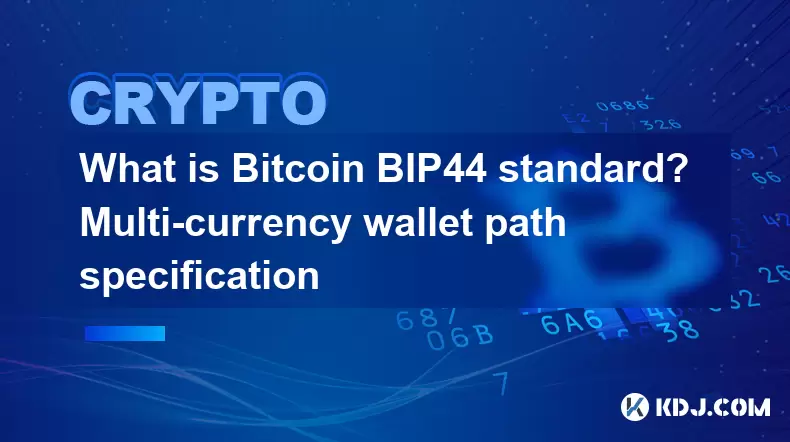
What is Bitcoin BIP44 standard? Multi-currency wallet path specification
Jun 15,2025 at 04:08pm
Understanding the BIP44 Standard in Bitcoin and CryptocurrencyThe BIP44 standard, which stands for Bitcoin Improvement Proposal 44, is a widely adopted hierarchical deterministic wallet structure used across various cryptocurrencies. It defines a structured path format that enables wallets to support multiple currencies while maintaining consistency and...

What is Bitcoin HD wallet? Advantages of layered deterministic wallets
Jun 16,2025 at 03:56pm
Understanding Bitcoin HD WalletsA Bitcoin HD wallet, or Hierarchical Deterministic wallet, is a type of cryptocurrency wallet that generates multiple keys and addresses from a single seed phrase. Unlike traditional wallets that create random private keys for each transaction, an HD wallet follows a structured hierarchy to derive keys in a deterministic ...

Is Bitcoin zero-confirmation transaction risky? Zero-confirmation usage scenarios
Jun 15,2025 at 03:57am
Understanding Zero-Confirmation Transactions in BitcoinBitcoin zero-confirmation transactions, often referred to as 'unconfirmed transactions,' are those that have been broadcast to the network but have not yet been included in a block. This means they have not received any confirmations from miners. While these transactions can be useful in certain con...
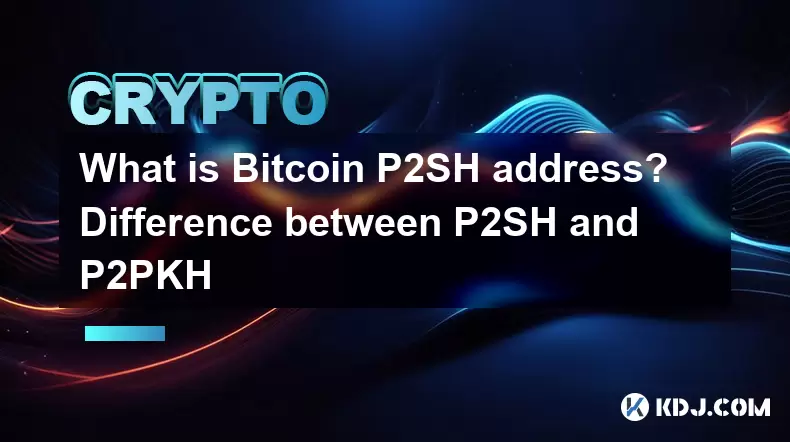
What is Bitcoin P2SH address? Difference between P2SH and P2PKH
Jun 16,2025 at 09:49pm
Understanding Bitcoin P2SH AddressesA Pay-to-Script-Hash (P2SH) address in the Bitcoin network is a type of address that allows users to send funds to a script hash rather than directly to a public key hash, as seen in earlier address formats. This innovation was introduced through BIP 16, enhancing flexibility and enabling more complex transaction type...

Which Bitcoin hardware wallet is better? Comparison of mainstream hardware devices
Jun 16,2025 at 02:08am
What Is a Bitcoin Hardware Wallet?A Bitcoin hardware wallet is a physical device designed to securely store the private keys associated with your cryptocurrency holdings. Unlike software wallets, which are more vulnerable to online threats, hardware wallets keep private keys offline, significantly reducing the risk of unauthorized access. These devices ...

What are Bitcoin non-custodial wallets? Self-controlled private key recommendation
Jun 16,2025 at 11:29pm
Understanding Bitcoin Non-Custodial WalletsA Bitcoin non-custodial wallet is a type of digital wallet where users retain full control over their private keys. Unlike custodial wallets, which are managed by third-party services such as exchanges, non-custodial wallets ensure that only the user can access and manage their funds. This means no intermediary...

What is Bitcoin BIP44 standard? Multi-currency wallet path specification
Jun 15,2025 at 04:08pm
Understanding the BIP44 Standard in Bitcoin and CryptocurrencyThe BIP44 standard, which stands for Bitcoin Improvement Proposal 44, is a widely adopted hierarchical deterministic wallet structure used across various cryptocurrencies. It defines a structured path format that enables wallets to support multiple currencies while maintaining consistency and...

What is Bitcoin HD wallet? Advantages of layered deterministic wallets
Jun 16,2025 at 03:56pm
Understanding Bitcoin HD WalletsA Bitcoin HD wallet, or Hierarchical Deterministic wallet, is a type of cryptocurrency wallet that generates multiple keys and addresses from a single seed phrase. Unlike traditional wallets that create random private keys for each transaction, an HD wallet follows a structured hierarchy to derive keys in a deterministic ...

Is Bitcoin zero-confirmation transaction risky? Zero-confirmation usage scenarios
Jun 15,2025 at 03:57am
Understanding Zero-Confirmation Transactions in BitcoinBitcoin zero-confirmation transactions, often referred to as 'unconfirmed transactions,' are those that have been broadcast to the network but have not yet been included in a block. This means they have not received any confirmations from miners. While these transactions can be useful in certain con...

What is Bitcoin P2SH address? Difference between P2SH and P2PKH
Jun 16,2025 at 09:49pm
Understanding Bitcoin P2SH AddressesA Pay-to-Script-Hash (P2SH) address in the Bitcoin network is a type of address that allows users to send funds to a script hash rather than directly to a public key hash, as seen in earlier address formats. This innovation was introduced through BIP 16, enhancing flexibility and enabling more complex transaction type...
See all articles

























































































